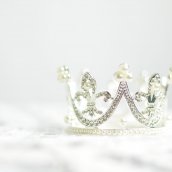
News & opinion
Champagne celebrates Champagnola ruling
The Comité Champagne has successfully challenged the attempt by Czech company Breadway to trademark the term ‘Champagnola’ for use on baked goods, as Manon Brodin explains.
Keep up to date by subscribing to our newsletter Perspectives.

The Comité Champagne has successfully challenged the attempt by Czech company Breadway to trademark the term ‘Champagnola’ for use on baked goods, as Manon Brodin explains.

A recent case examined whether a rights holder could enforce a trademark within the registration grace period, even if the right is subsequently revoked for non-use. We set out the ruling and explain the importance of regular portfolio reviews to ensure valuable marks are in use.

In Gömböc, the Court of Justice of the European Union (CJEU) has provided some welcome guidance on trademarking designs in the EU.

Novagraaf is very proud to be working with Gabicci, a heritage brand from the 1970s. We explain the role of IP in the revival of a beloved fashion brand.

Mexico has become the latest country to deposit its instrument of accession to the International Design system, following Israel, Samoa and Vietnam last year. The growth of the system is only good news for businesses operating internationally.

Although not impossible, seeking trademark protection for slogans in the European Union can prove difficult. What can be learned from those slogans that have achieved success?

From Led Zeppelin to Katy Perry, it seems that hardly a few weeks go by without another music IP case hitting the headlines. But, does this mark an increase in actual ‘copying’, or is it just a indication of the high amounts of money at stake once a pop group or pop song becomes successful?

The Unified Patent Court Agreement received a further blow this month after Germany’s Federal Constitutional Court declared the Act establishing the system null and void on constitutional grounds.

Despite holding a EU collective trademark, the EU General Court ruled that ‘Halloumi’ was too descriptive, and thus lacking in distinctive character, to successfully oppose a EU trademark application for ‘BBQloumi’. Now, the CJEU has set aside that decision.

In a new twist to the ‘Royal’ trademark saga, Prince Harry and Meghan Markle have retracted their application for the ‘Sussex Royal’ marks. Megan Taylor outlines the barriers to obtaining a Royal trademark.

If a trademark office deems a potential trademark to be contrary to public policy or accepted principles of morality, it can refuse to register the mark. Following a recent CJEU decision, concrete evidence will be necessary to substantiate that decision, as Casper Hemelrijk explains.

A recent judgement by the District Court of The Hague shows the importance of documenting comprehensive and consistent evidence of trademark and trade name use.